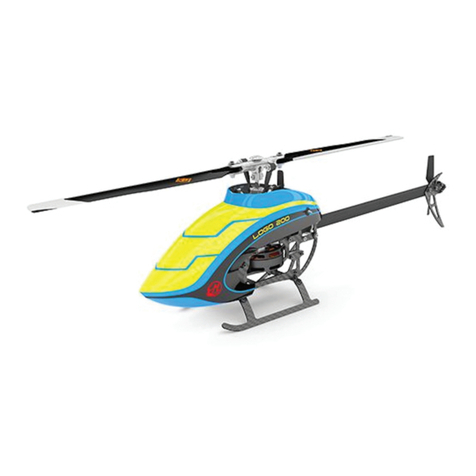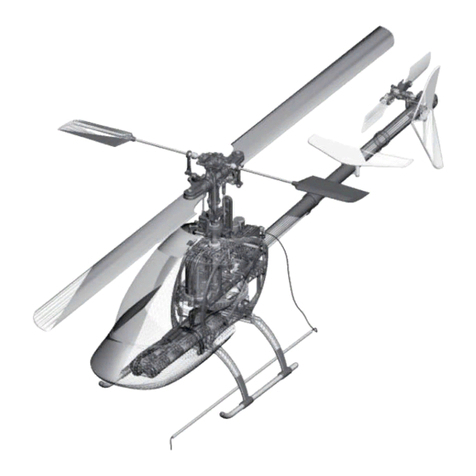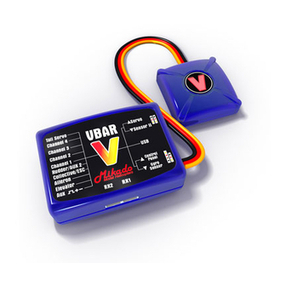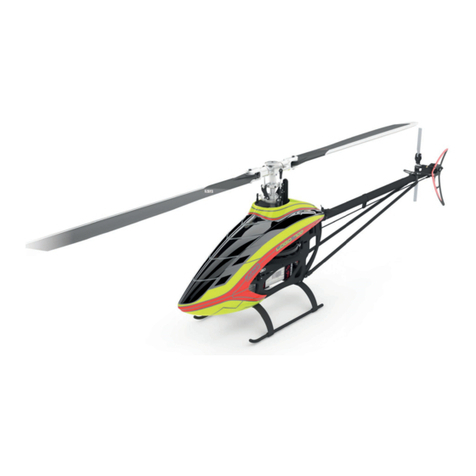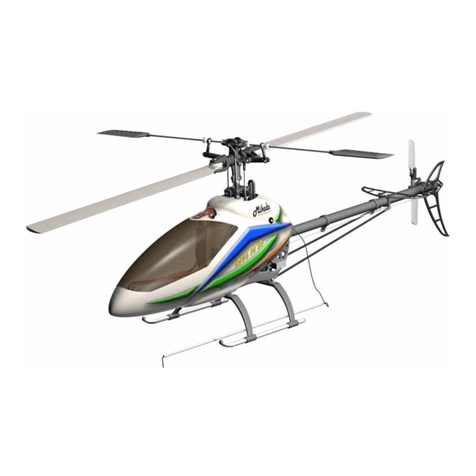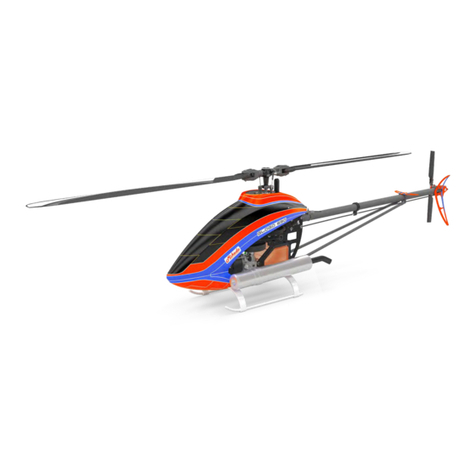
Manual
LOGO 20
Page3 ©MikadoModellhubschrauber
Safety Instructions
OPERATING YOUR MODEL SAFELY
Operate the helicopter in spacious areas with no people nearby.
!Warning: Do NOT operate the helicopter in the following places and situations
(or else you risk severe accidents):
• in places where children gather or people pass through
• in residential areas and parks
• indoors and in limited space
• in windy weather or when there is any rain, snow, fog or other precipitation
If you do not observe these instructions you may be held reliable for personal injury or property damage!
Always check the R/C system prior to operating your helicopter.
When the R/C system batteries get weaker, the operational range of the R/C system decreases. Note that you
may lose control of your model when operating it under such conditions.
Keep in mind that other people around you might also be operating a R/C model.
Never use a frequency which someone else is using at the same time. Radio signals will be mixed and you will
lose control of your model.
If the model shows irregular behavior, bring the model to a halt immediately. Turn off all power switches and
disconnectthebatteries.Investigatethe reason and fix theproblem.Donotoperatethemodel again as long asthe
problem is not solved, as this may lead to further trouble and unforeseen accidents.
!Warning: In order to prevent accidents and personal injury, be sure to observe the following:
Before flying the helicopter,ensurethatallscrewsare tightened.Asingleloosescrew maycause a major accident.
Replace all broken or defective parts with new ones, as damaged parts lead to crashes.
Never approach a spinning rotor. Keep at least 10 meters/yards away from a spinning rotor blades.
Do not touch the motor immediately after use. It may be hot enough to cause burns.
Perform all necessary maintenance.
PRIOR TO ADJUSTING AND OPERATING YOUR MODEL, OBSERVE THE FOLLOWING
!Warning: Operate the helicopter only outdoors and out of people’s reach as the main rotor operates at high rpm!
!Warning: While adjusting, stand at least 10 meters/yards away from the helicopter!
Novice R/C helicopter pilots should always seek advice from experienced pilots to obtain hints with assembly
and for pre-flight adjustments. Note that a badly assembled or insufficiently adjusted helicopter is a safety hazard!
In the beginning, novice R/C helicopter pilots should always be assisted by an experienced pilot and never fly
alone!
Throttle channel should be in motor OFF position while powering up.
When switching the R/C system ON or OFF, always proceed in the following order:
When switching ON:
• Position the throttle control stick (on transmitter) to a position where the LOGO 10 motor does not operate.
•Turn on the transmitter.
• Turn on the receiver.
• Connect the motor battery.
• Operate your model.
When switching OFF:
• Turn off the motor (move throttle control to a position where motor does not operate).
• Wait until the rotor head has stopped spinning.
• Disconnect the motor battery.
• Turn off receiver.
•Turn off transmitter.



